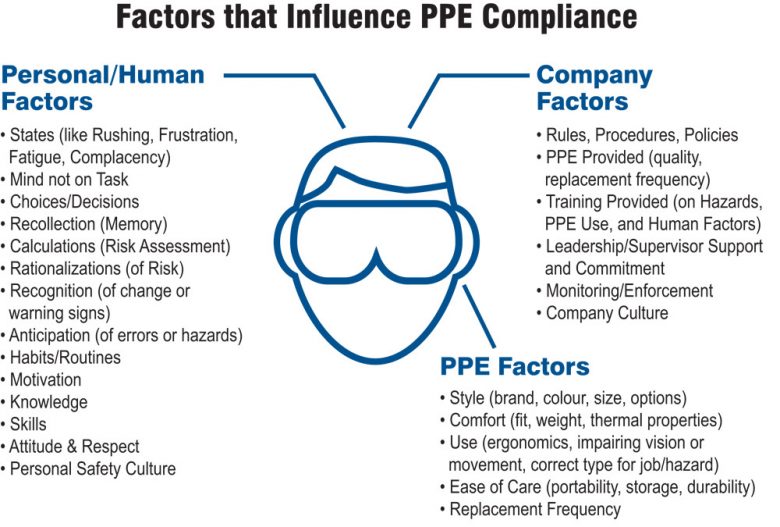This is an excerpt from our free guide on improving PPE compliance.
Look at any PPE advertisement—the advancements in PPE design and construction are nothing short of impressive—better protection, better standards, more comfortable fit, improved thermal properties and even better-looking styles, sizes and options.
But even if you have provided your employees with the best, most comfortable and stylish PPE, there is no guarantee it will be worn when it is needed—a common problem for safety professionals that results in too many unnecessary injuries—a problem so common that look and comfort tend to dominate ads by PPE manufacturers.
Sure, “fit and finish” goes a long way in getting employees to put their PPE on in the first place, but what about day in and day out in all types of situations— in the heat of the moment, first thing Monday morning or end-of-shift Friday, when something changes, gets difficult or goes wrong? In these critical moments, you’ll need more than “comfort and cool” to get them to think “safety first”.
98 percent observed noncompliance
98 percent of respondents who attended the American Society of Safety Engineers (ASSE) show answered “yes” when asked if they had observed workers not wearing safety equipment when they should have been, according to the survey, which was conducted by Kimberly-Clark Professional and announced in a 2011 press release.
To make matters worse, 30 percent of these respondents said this had happened on numerous occasions. Given this, it’s not surprising that worker compliance with personal protective equipment (PPE) protocols was cited as the top workplace safety issue by all survey respondents.
Human factors
Even with an exceptional PPE program in place, unless you address human factors in your PPE training, errors and decisions will be made that will result in injuries— that’s a guarantee. It’s guaranteed because we all make mistakes.
Even if your employees know the risk, know the rules and know the consequences, even though they want to go home safely as much as you want them to, even if they want to comply, the bottom line is: when they’re rushing, frustrated, tired or complacent, they are more likely to make an unintentional error, make a poor decision, take a shortcut or simply forget their PPE.
To learn more about how human factors affect PPE compliance, read the full version of Providing the Best PPE is No Guarantee: A guide to addressing the human factors in your PPE program.

